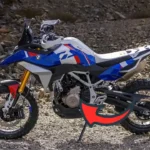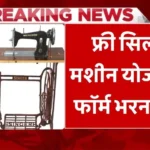India’s street bike segment has always been a battleground for style, performance, and daily usability. And in 2025, two names stand tall – the Yamaha MT-15 V2 and the Bajaj Pulsar NS200. Both are loved by young riders for their aggressive looks and zippy performance. But when it comes to choosing one, which one truly deserves your attention?
Let’s break it down.
Design & Street Presence – Sleek Transformer vs Bulky Beast
The Yamaha MT-15 V2 flaunts a transformer-like headlamp, sharp body lines, and a compact yet sporty design. It’s lean, mean, and built for the urban jungle.
In contrast, the Pulsar NS200 sticks to a more muscular approach – broader panels, a powerful stance, and traditional sporty aesthetics. It feels more solid and intimidating on the road.
If you love futuristic and edgy design, Yamaha wins.
If road presence and muscle matter more, the NS200 steals the show.
Engine Performance – Smooth VVA vs Raw Power
The MT-15 V2 runs on a 155cc liquid-cooled engine with Variable Valve Actuation (VVA), producing 18.4 PS and 14.1 Nm of torque. It’s smooth, refined, and comes alive post 6,000 RPM.
The NS200 packs a more powerful 199.5cc engine, pushing out 24.5 PS and 18.74 Nm. Its triple-spark tech boosts power and efficiency, giving it the upper hand in terms of sheer performance.
Yamaha is better for daily rides and beginners.
Pulsar NS200 is the choice if you want thrilling highway performance.
Ride & Handling – Agile vs Stable
Thanks to its Deltabox frame, USD forks, and lower kerb weight, the MT-15 V2 is incredibly flickable in traffic and beginner-friendly.
The NS200 features a perimeter frame, conventional front forks, and feels more planted at high speeds. While it’s heavier, it offers more confidence on open roads.
For city rides and sharp handling, Yamaha shines.
For stability and long-distance confidence, Pulsar leads.
Features & Tech – Smart Touch vs Safety Boost
The MT-15 comes with a fully digital LCD console, LED lighting, Bluetooth connectivity (in select trims), and a side-stand engine cut-off.
The NS200 sticks to a semi-digital console, without Bluetooth. However, it features dual-channel ABS – a big win for safety over Yamaha’s single-channel ABS (except in the Deluxe or MotoGP variants).
Yamaha is modern and feature-rich.
Pulsar offers better braking and safety confidence.
Price & Value – More for Less?
- Yamaha MT-15 V2: ₹1.68 lakh (approx. ex-showroom)
- Bajaj Pulsar NS200: ₹1.57 lakh (approx. ex-showroom)
Though cheaper, the Pulsar NS200 delivers more power and better braking. However, Yamaha offers a premium experience with advanced features and a sleeker image.
Also Read: Honda Activa 7G vs Activa 6G: What’s New in the Upcoming Model?
Which One Should You Buy?
If you’re someone who rides mostly in the city, prefers lightweight bikes, and loves the tech-savvy, premium feel – go for the Yamaha MT-15 V2.
If you’re all about power, road dominance, and high-speed stability – the Bajaj Pulsar NS200 won’t disappoint.










